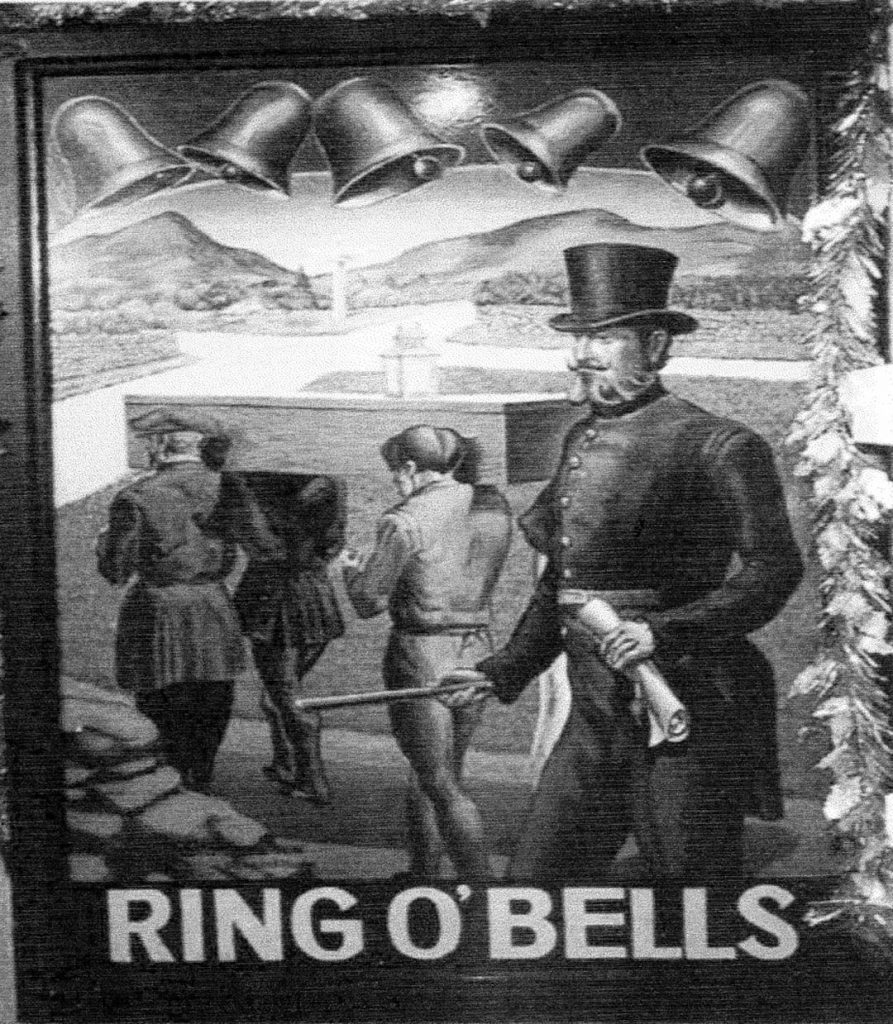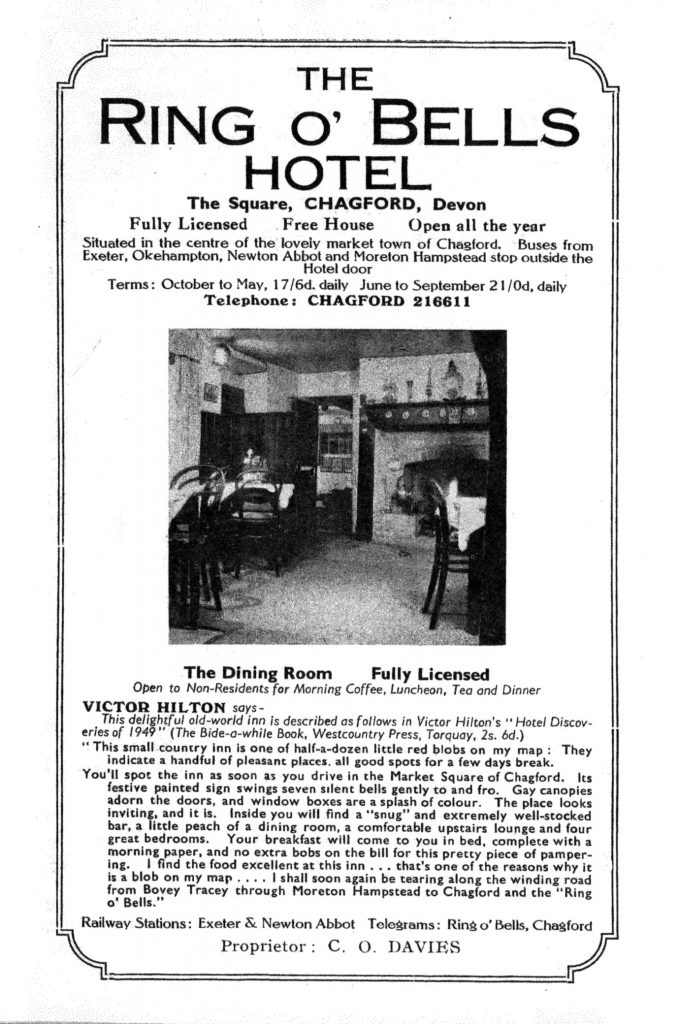Links to the Church
It is generally considered that the Ring O’Bells is the Ale House linked to the Churchwardens accounts. Without doubt, masons working on the Church would drink ale and lodge at the Inn. Some may also have run it! James and John Beer were masons, they also held the franchise, granted by the Churchwardens, to run the markets and fairs in Chagford.
Edward Pinson is described as a tailor as it was common for publicans to hold a second job. In 1729 Edward Pinson was paid threepence for mending the ‘paul’ (pall bell rope). In 1757 pd 1s 6d to Edward Pinson for mending the ‘Master of Arts hood’ (a garment similar to a graduation day gown). Ale continued to be supplied by the Ring O’Bells to the Church well into the nineteenth century. Supplying the ringers after practice, marriage, death or public rejoicing.
The following entry from the Churchwardens accounts show the disbursements of Daniel Harvey and William Ellis of Stinnial 1816 -17.
- Paid the ringing ale £1 2s 6d
- pd William Pinson for strings 0 7s 0d
- pd Beer for the jurymen that 0 7s 0d
- sat on the body of Samuel Martyn
This last entry confirms that juries did indeed convene on suspicious deaths or even suicides!
The Upper Room
Wallace Perryman’s account recollected when he was 70, in the Western Morning News (Oct 1970), gives us a glance of other activities at the Inn.
“ A lady who lives only half a mile from Chagford has a beautiful painting of the Ring O’Bells dated 1600. The granite stairs go from the pavement to what is now the middle window, then a doorway, entering into the upper room, where club meetings and fair dinners were held. If anyone died suddenly, or committed suicide, the person would be crowned in that room. In 90 out of 100 suicides the verdict was ‘felo de se’, self murder, and they were buried at crossways by lanternlight”.
There was no police force. My grandfather was sworn in as parish constable in the early 1800’s. There were eight constables.

This splendid Stanley Chew sign (now inside the pub) shows the Inn’s earlier functions as a mortuary and jail.
George Clampitt, a boot and shoe maker known as Cuddy, was known as crowner’s messenger. As soon as a suicide or sudden death took place George would change into his uniform and journey on foot the 11 miles to Okehampton, have a meal at the George Inn in West Street, and then continue on the remaining 14 miles to Black Torrington to deliver his message to the crowner….the crowner would give George full instructions. On returning to Chagford he would go to the landlord of the Ring O’Bells and book the upper room for the date and time for the crowning. He would then summon a twelve man jury for the crowning.” (The crowner would be the modern day coroner).
Squabble in a Chagford Public House.
An extract from the Exeter & Plymouth Gazette 18th Nov 1891.
At Okehampton County Court John Holmes, a blacksmith claimed damages for injuries from Lewis Holmes landlord of the Ring O’Bells Chagford. In a drunken arguement over a dog, Lewis Holmes kicked John Holmes violently in the leg, breaking it, and throwing him to the ground where he bumped his head. He was on the ground for twenty minutes and later had to receive medical attention. According to the landlord, the fight began between John Holmes and another named Stoneman. He then tried to separate them resulting in the injuries. Both parties said they were sorry. The Judge said there was a strong conflict of evidence as the plaintiff had brought the trouble upon himself as he was under the influence of drink. However, the Judge ruled in favour of the plaintiff and the landlord was fined £30 plus costs. (It does not say if they were related).
Fires at the Ring O’Bells
Fires were common-place as most of the buildings would have thatched roofs. It is recorded in the late 1600’s that a major fire in Chagford probably destroyed the Ring O’Bells.
George W. Ormerod M.A, local solicitor and historian recorded…
- 1845 Dec 29th fire in Mill Street and in Market Place at houses of Hooper, Murch and Stanbury. This covered the area now occupied by Bowdens, (Webbers) and the Ring O’Bells.
- 1855 July 9th Fire at Ring O’Bells.
- 1860 April 25th Ring O’Bells burnt down.
This was recorded on May 2nd in the Exeter Flying Post:
“A few evenings since a fire occurred in this town which destroyed the Ring O’Bells public house. The exertions of the firemen of the West of England engine prevented the flames from extending to the adjoining houses, which were of thatch. The property was insured.”
